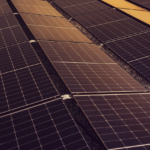If April showers bring May flowers, what do May flowers bring? If you answered “sneezing and itchy eyes,” then you may have some experience with seasonal allergies. Allergies can make kids feel wretched, even on the most beautiful spring days. To help them feel better, be sure your child’s diet includes a variety of fruits and vegetables, and consider ways baby multivitamin drops can bolster their immune system during pollen season. Find out how you can manage the discomfort of your child’s spring allergies so everyone can get back to enjoying the sunshine.
What Are Spring Allergies?
Children with allergies usually develop symptoms between ages 3 and 5, after they have experienced multiple pollen seasons. The immune system releases histamines to protect the body against allergens. These histamines cause the sniffles and eye rubbing that kids with allergies exhibit during the spring.
Rhinitis, an inflammation of the nasal passages, is the most noticeable symptom of allergies, or “hayfever” (although reactions to hay allergens actually occur in the fall!) While symptoms of allergy-related rhinitis seem similar to those of the common cold, spring allergies also include an itchy nose and eyes and generally last several weeks or months during pollen season. If the symptoms recur annually and continue for at least two to three weeks, then allergies are the most likely culprit. Watch your child for behaviors like:
- Sounding congested or complaining about feeling “stuffed up”
- Rubbing their eyes
- Eating with an open mouth due to difficulty breathing through their nose
- Developing a red line on their nose from pushing on it
Prevention Tips for Spring Allergies
The best way to prevent allergy symptoms is to avoid the catalyst. In other words: stay inside during the spring pollen season.
Of course, it’s not ideal to keep kids inside every day in the springtime! Instead, keep your child inside during peak daily allergen periods, such as mid-morning and early evening. Make a habit of checking the pollen counts and air quality indexes so that you can make better decisions about outside play. When bedtime rolls around, wash away pollen from your child’s hair and body with a shower or bath.
As with colds and viruses, make sure your child washes their hands often to inhibit the transfer of allergens to the nose and eyes. Adding vitamin supplements or infant immune support drops to your daily routine during allergy season offers the additional benefits of immune-boosting vitamins and minerals like A, C, D, E and zinc.
Treating Your Child’s Spring Allergies
Your pediatrician should be your principal resource for any medical treatments such as nasal corticosteroids, antihistamines or decongestants, but you can alleviate some of the bothersome symptoms right at home:
- Spicy foods with cayenne pepper or hot ginger to clear the sinuses.
- Petroleum jelly can ease raw skin on sore noses, and make sure you have soft tissues on hand, preferably those infused with aloe or lotion.
- Cold compresses may calm itchy eyes, while warm compresses can ease sinus pain.
- A saltwater gargle can help soothe sore throats. Add 1-2 tablespoons of table salt to 8 ounces of water to reduce pain.
Although there is no cure for seasonal allergies, by practicing prevention methods like an immune booster for kids, avoiding allergy triggers and managing symptoms, you can mitigate some of the worst effects of spring allergies and get your children back outside!




